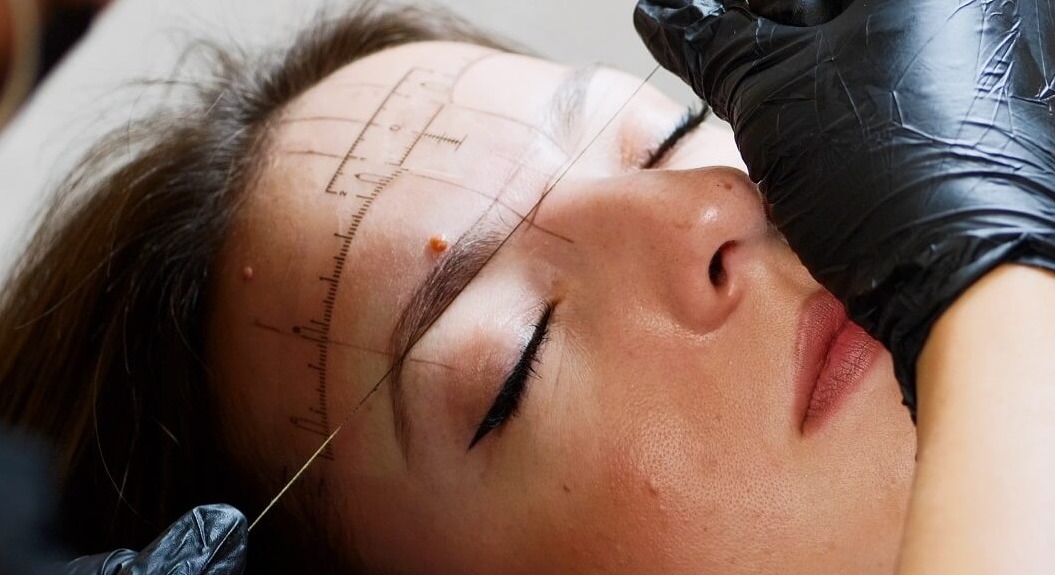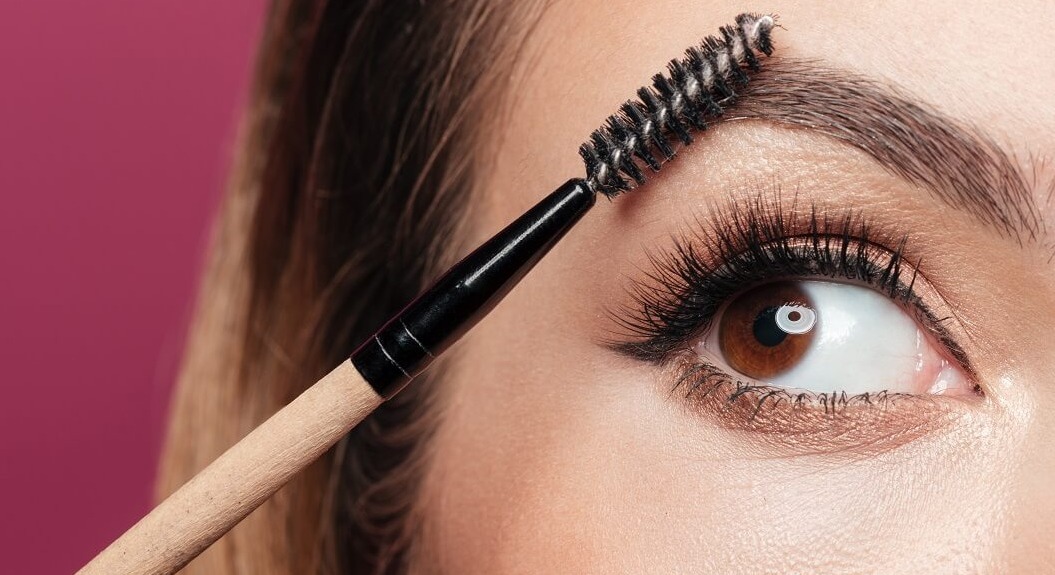How to shape eyebrows according to face shape: Ideal proportions for every beauty type
31st Oct 2024
Well-shaped eyebrows can completely transform the look of your face, highlighting its natural beauty and adding harmony to your features. While the shape of your eyebrows may seem like a minor detail at first glance, it has a significant impact on overall aesthetics. Choosing the right eyebrow shape is essential to achieving an ideal balance in your facial features. Well-matched brows not only slim the face visually but also give it a more defined character.

Why is Brow Mapping Important?
Brow mapping is a crucial step to achieve a harmonious and aesthetically pleasing look. Properly mapped brows help tailor their shape to your natural facial structure, enhancing its strengths and subtly concealing small imperfections. By precisely defining the starting, arch, and ending points of the brows, you can achieve a symmetrical and proportional shape that adds distinctiveness and balance to your face. Moreover, brow mapping prevents common mistakes like over-plucking or creating unnatural arches, which is especially helpful for people who lack experience in shaping brows themselves. Regular brow mapping also makes maintenance easier, as clear contours and lines help keep the shape neat and less time-consuming. As a result, a well-suited brow shape, based on mapping, can rejuvenate your look, adding a fresh, youthful, and attractive expression to your face.
How to Identify Your Face Shape?
Recognizing your face shape is the first step in choosing the perfect eyebrow shape to highlight your features. There are several basic face shapes: oval, round, square, rectangular, heart, triangular, and diamond.
To determine your shape, take a closer look at your facial proportions in a mirror.
Step 1: Measure Your Face Proportions
Use a tape measure or ruler to take three key measurements:
1. Forehead Width: Measure the widest part of your forehead.
2. Cheekbone Width: Measure across from one cheekbone to the other, through the middle of the face.
3. Face Length: Measure from the hairline to the bottom of the chin.
Step 2: Identify the Widest Point of Your Face
Note which part of your face is the widest – forehead, cheekbones, or jawline. This can give you clues about your face shape.
Step 3: Observe the Jawline
Your jawline also plays a significant role in determining your face shape. Consider whether it is more rounded, square, or narrower and pointed.
Step 4: Compare Results
Compare your measurements and facial features to the descriptions of typical face shapes:
- Oval Face: The length of the face is about one and a half times its width, and the forehead is slightly wider than the jawline.
- Round Face: The face is almost as wide as it is long, with a rounded jawline.
- Square Face: The forehead, cheekbones, and jawline have similar widths, with a more defined, square jawline.
- Rectangular Face:The face is long and narrow, with a straight jawline.
- Heart Face:The face is wider at the forehead, narrowing towards a pointed chin.
- Triangular Face: A broad jawline and narrower forehead.
- Diamond Face:The face is wide at the cheekbones, with a narrower forehead and jawline.
By matching your face shape to an eyebrow style that complements it, you can enhance your natural beauty effortlessly.
Ideal Eyebrow Shapes for Different Face Types
Selecting the right eyebrow shape for your face can have a significant impact on your features, highlighting the best of them. Each face type benefits from a unique approach to achieve a harmonious look. Here are the recommended eyebrow shapes for different face types:
Oval Face
If you have an oval face, you’re in an ideal situation, as this face shape is considered the most balanced. For oval faces, eyebrows should be gently rounded with a slightly lifted arch. This shape enhances the natural symmetry of the face, adding definition without excessive drama.
Round Face
For those with round faces, the key is to create a slimming effect. Here, eyebrows with a pronounced, high arch work best. Avoid rounded brows that can emphasize the roundness of the face. Instead, opt for a more angular, defined shape to elongate the face and add proportionality.
Square Face
A square face is characterized by a strong jawline, so eyebrows should soften these sharp features. Rounded eyebrows with a gentle arch are ideal to add softness to the face. Avoid sharp angles in the brows, which may further highlight the square shape.
Rectangular Face
For rectangular faces, which are longer than they are wide, the goal is to visually shorten the face. Straight, almost horizontal brows work well here, as they visually extend the face horizontally, adding balance. A moderate arch is also effective, as long as it’s not too high.
Heart-Shaped Face
A heart-shaped face, which is wider at the top and narrows toward the chin, benefits from gently rounded brows with a soft arch. This shape softens a wide forehead and balances facial proportions. Avoid a high arch, which may draw attention to the forehead’s width, and instead go for a subtler shape.
Triangular Face
With a triangular face featuring a wide jawline and narrower forehead, eyebrows should add width to the upper face. Longer, more elongated brows with a gentle arch are recommended. It’s important to keep the brows fuller toward the ends to help balance proportions.
Diamond Face
A diamond face, with wide cheekbones and a narrower forehead and jaw, pairs well with more rounded eyebrows. The arch should not be too high, as this may accentuate the cheekbone width. Curved brows are key to softening the facial angles.
How to Achieve the Ideal Eyebrow Shape
Achieving the ideal eyebrow shape may seem challenging, but with the right techniques and tools, it’s fully possible, even at home. Follow these steps for perfectly shaped eyebrows suited to your face type:
Step 1: Gather Your Tools
Before starting, make sure you have all the necessary tools:
- Tweezers with sharp tips for precise hair removal.
- Eyebrow brush or spoolie for grooming and shaping.
- Magnifying mirror to see every hair clearly.
- Eyebrow pencil to mark the desired shape.
Step 2: Define the Brow Shape
To achieve symmetrical, well-suited brows, it’s helpful to first mark the ideal shape. Use an eyebrow pencil to define three key points:
1. Start of the brow Should align with a straight line from the edge of the nostril through the inner corner of the eye.
2. Highest point of the arch: Found along a line from the nostril through the outer edge of the iris.
3. End of the brow: Marked by a line from the nostril through the outer corner of the eye.
Step 3: Shape the Brows
Once you’ve outlined the shape, begin shaping the brows:
- Pluck the hairs outside the marked line using tweezers, starting from the brow’s base. Work slowly and carefully to avoid over-plucking.
Step 4: Symmetry and Balance
After finishing one brow, move to the other, striving to maintain symmetry. Brows don’t need to be identical, but they should harmonize and suit your face shape.
Step 5: Fill in the Brows
If your brows are sparse or have gaps, fill them in:
- Eyebrow pencil: Draw short, soft strokes to mimic natural hairs.
- Eyebrow powder Apply with a brush for a more subtle look.
- Brow gel: Use to set the shape and add volume.
Tinted eyebrow cream: Adds a more intense color to both hair and skin.
Step 6: Set the Shape
Finally, brush through your brows with a spoolie and apply a clear brow gel to keep their shape in place throughout the day.
Additional Tips:
- Moderation is Key: It’s better to leave a few extra hairs than over-pluck. Hairs that grow too close to the brow line may not grow back easily.
- Avoid Overly Thin Brows: Fuller, natural brows are in style and lend a youthful look to the face.

Common Eyebrow Shaping Mistakes and How to Avoid Them
Shaping eyebrows requires precision and a light touch. Unfortunately, it’s easy to make mistakes that affect the look of your face. Here are some common eyebrow-shaping mistakes and tips on avoiding them to achieve the ideal shape.
1. Over-Plucking: Removing too many hairs can lead to overly thin brows. Fuller brows add a youthful look to the face.
- Solution: Before plucking, mark the desired shape with a pencil. Stick to this outline, removing only the hairs outside of it.
2. Lack of Symmetry: While brows are sisters, not twins, they should be as similar as possible.
- Solution: Work alternately on each brow to maintain symmetry. Use a magnifying mirror and take breaks to assess your progress.
3. Incorrect Arch Placement: A poorly positioned arch can drastically change the expression, giving an overly stern, surprised, or sad look.
- Solution: The arch should be delicate and naturally aligned above the outer edge of the iris when looking straight ahead.
4. Plucking the Upper Brow Line: Removing hairs from the upper brow can disturb the natural shape, making brows appear unnatural.
- Solution: Focus primarily on the lower brow line. Leave the upper line intact or only remove clearly out-of-place hairs.
5. Using the Wrong Tools: Dull tweezers or insufficient lighting can lead to poor results.
- Solution: Invest in quality tweezers with sharp tips and ensure good lighting.
6. Skipping Skin Prep: Shaping brows without prepping the skin can be painful and lead to irritation.
- Solution: Wash your face with warm water to open the pores and soften the skin before shaping. A warm compress can also ease hair removal.
The Key to Perfect Brows: Subtlety and Precision
Eyebrow shaping is a delicate art that demands both patience and precision. Avoiding common mistakes, such as over-plucking, asymmetry, or improper tools, will help you achieve a shape that perfectly complements your face type. Remember, the key to beautiful brows is subtlety – they should enhance your beauty, not dominate it. Regular maintenance and shape adjustments will keep your brows looking fresh and natural. And if you're ever unsure, don’t hesitate to consult a professional – your brows deserve the best care.

